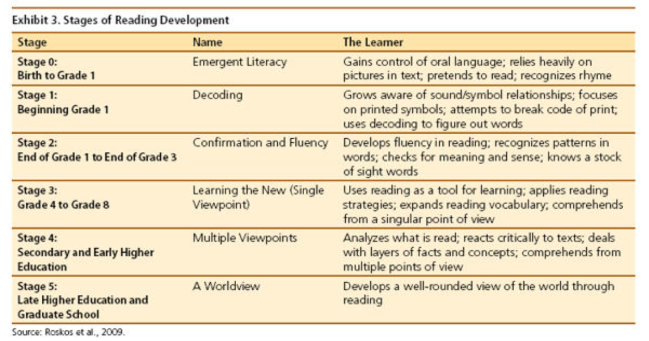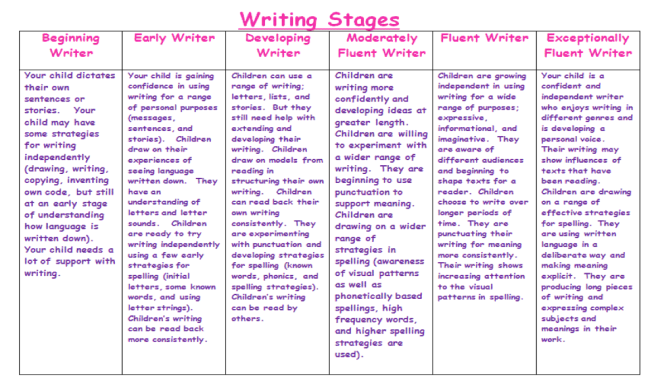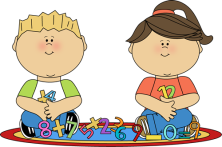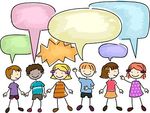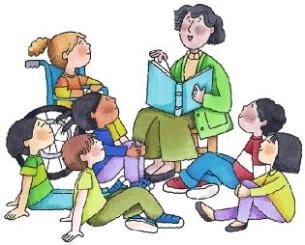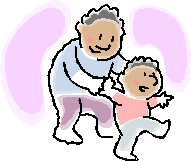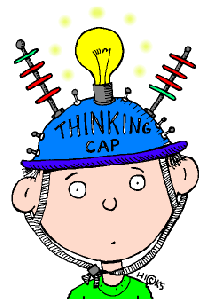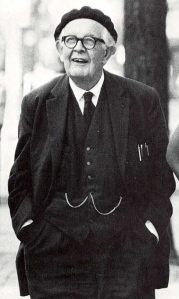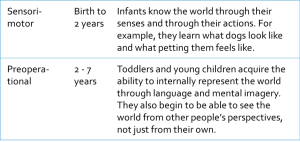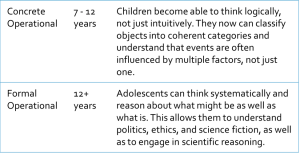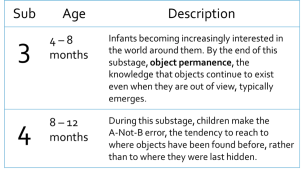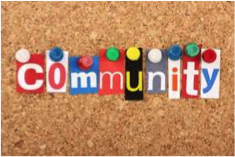Development of the Academic Domains
By: Daniela Patino
When a child first goes into school he takes with him knowledge that he already knows on different subjects, this is known as background knowledge. Once in school, his learning builds upon these initial mental frameworks and extends beyond.
READING DEVELOPMENT
Reading development is one of the first skills that a child should learn from a very young age. The development of this domain consists of different phases:
–Emergent Literacy (Pre k): In this phase, children learn what books are, and they learn about language. During this phase students must master the skill of phonemic awareness, the understanding that the spoken language is made up of building blocks. It is advisable to provide children with enjoyable experiences with books, especially picture books.
–Beginning Reading (K-1st ): During this phase young students, generally in kindergarten and 1st grade are learning to read words, and to understand what they read. They begin to use different strategies to predict a word, and confirm they predictions using the pictures in the story.
–Building Fluency (1st -2nd): While in 1st and 2nd grade the student’s reading becomes more rapid and accurate. They read with which they read is a sign of the child’s reading comprehension.
–Fluent Readers (3rd -4th): At this stage the students begin to read in order to learn and for pleasure. They are able to read, understand and carry on instructions; they read novels and chapter books.
–Mature Reading: During this stage, the reader is confident with their understanding of the text. They choose of book because of their liking of the author’s style. They read with awareness of issues and themes.
The experience that children have at home with literacy and books can have a great effect on their reading development. There are a lot of different things that can influence the type of reader a child will become, the type of support the receive at school, from their peers, and from the society; but also their own characteristics.
WRITING DEVELOPMENT
In order to master the writing skills, children have to coordinate different abilities. This development has age trends that occur as children gain more experience.
–Prephonemic (mid Kindergarten): During this phase, children know what letters look like and can write unconnected letters, but use them without regard to their sounds.
–Early Phonemic (end of Kindergarten): At this phase children use letters to represent some of the sounds in words. They begin to represent words by their phonemes; they commonly represent only the first and last letter of the word.
–Letter name (mid 1st grade): The children in this phase represent almost all (or all) of the phonemes in a word.
–Orthographic (end of 2nd grade): The children in this phase are normally beginning readers who have become aware of the conventional spelling for sounds. They might still miss one or two letters in a word.
–Morphological (late 2nd grade-4th grade and beyond): In this phase, children are able to spell correctly, adding prefixes and suffixes to the words. They have learned common patterns of spelling, such as rules for long and short vowels.
–Derivational (early 4th grade through adulthood): At this level, children can recognize morphemes and use them for spelling, reading and as clue for meaning of some words.
As with reading, the development of writing is influenced by a great number of things (experiences at home, characteristics, support from school, peers and the society).
MATHEMATICS DEVELOPMENT:
Mathematics is the study of different disciplines (arithmetic, algebra, geometry, statistics) that use different methods for representing and solving quantitive problems.
When a child is 5 or 6 months old, they are aware of the difference between a small collection of objects and a large one. As they grow older (1 year old) they begin to understand the concepts of “more” and “less”
By the time a child turns 5, they can sometime count up to 50, although it is normal for them to get confused about the order of some numbers. At this age, they have also mastered some basic principles of counting, which include:
–One-one principle: By this time children know that each item in a set may be counted once and once only and that this item is assigned only one number name.
–Cardinal principle: The last number word said while counting, indicates the number of items in a collection.
–Order-irrelevance principle: A collection of items has the same number regardless of the order in which the items are counted.
– Whole-part-whole principle (early elementary grades): At this level children understand that any single number may be broken into two more smaller numbers and that any two more numbers can be combined to form a larger number.
Almost every child has the capacity of being aware that objects and substances vary in quantity. Some children are able to understand challenging mathematical principles, while others may have learning disabilities (such as dyscalculia) that delay their ability to understand number concepts.
For more information on the stages of Reading development please head to Reading Rockets http://www.readingrockets.org/article/51574



